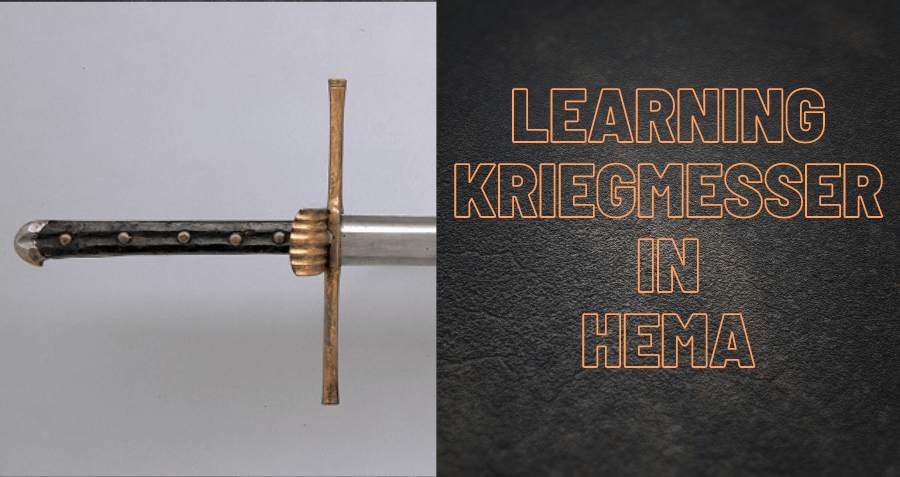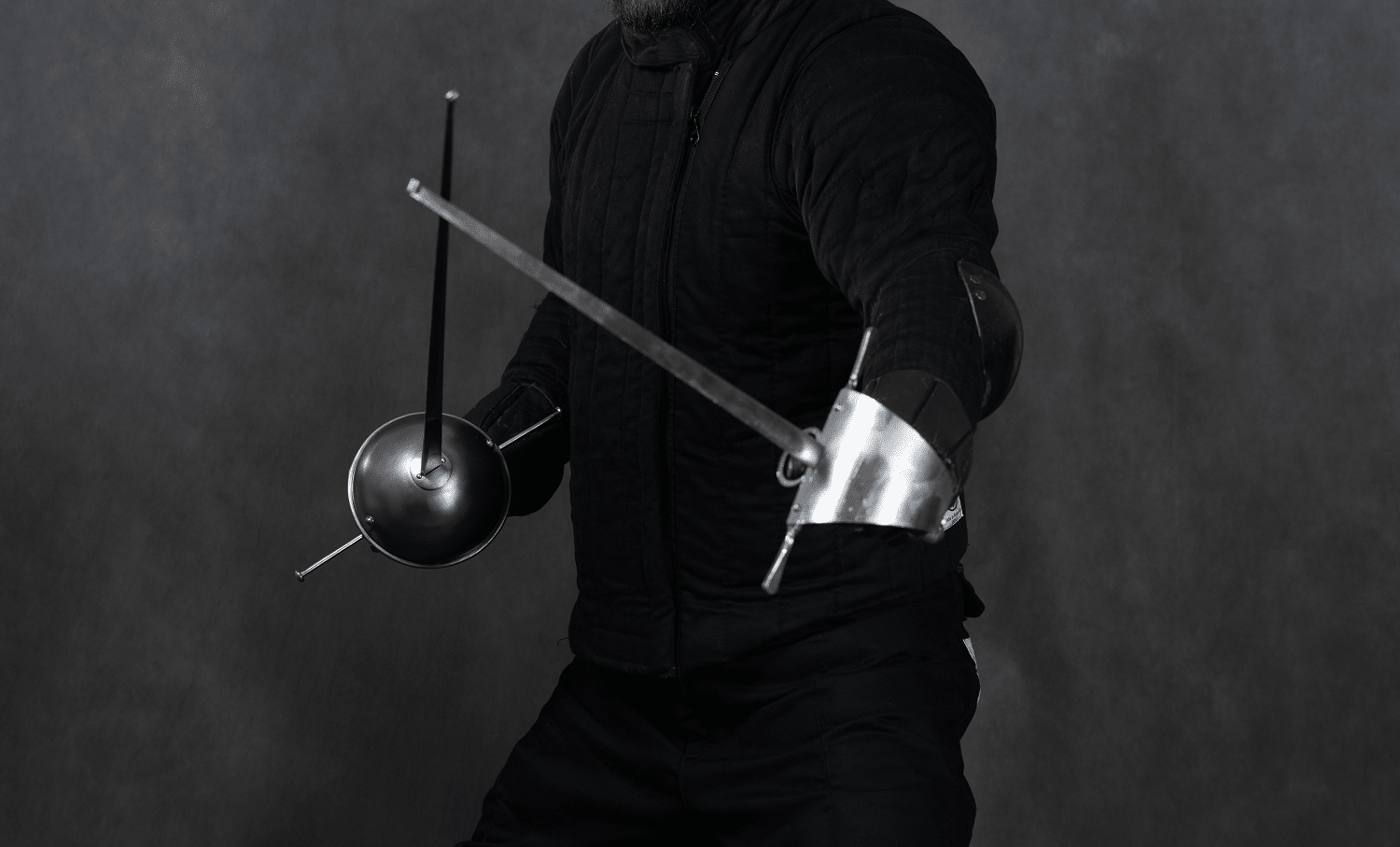Mounted horseback combat in Historical European martial arts (HEMA) practices is sometimes referred to as Historical Equestrian Martial Sports (HEMS). This practices incorporates aspects of dressage along with reconstruction of weapons-based combat techniques depicted in historical source material such as medieval fight books. The goal is to revive the martial traditions of historical cavalrymen. Learning to fight on horseback with swords in HEMA is a thrilling and fun aspect of equestrian sports being revived today.
As an example of what Historical Equestrian Martial Sports is like to see, here is a great short video documentary showcasing what mounted combat in HEMA is like,
A section of our website, Path of the Cavalier, focuses on listing the different historical source material used to reconstruct these ancient traditions of horse mounted combat with swords and other weapons. There are also a small number of HEMA schools, such as Academie Cavallo in Langley, British Columbia, Canada and Axelved Historic Fencing Society in Denmark, which are reconstructing and reviving these lost equestrian arts.
For the rest of this article we want to share a brief summary of horseback mounted combat in Europe so people can understand the significance of it and how it has helped shape the modern world.
The History of Fighting on Horseback in Europe
The bond between man and horse has cemented itself into history and is one of the oldest relationships humans have with animals. While the art of fighting on horseback is popularly believed by many in the general public to have its beginnings in medieval Europe, historical research have shown that horses have been used in warfare since around the year 2637 years BCE, originating in Asia. The riding style and uses of horses in battle has slowly but effectively evolved through the centuries.
Horseback Mounted Warriors In Ancient Times
It is difficult to say precisely which tribe of people officially brought the concept of using horses in warfare to Europe. Wheeled war chariots drawn by horses has been used for centuries by multiple cultures around the world since Ancient times. Horses were not ridden for war in ancient times due to physical characteristics of ancient horses; they were smaller than the horses we know of today. These ancient horses are believed to have lacked the strength and stamina required for horseback mounted combat as part of a military force. However, these horses were fast and able to pull wheeled chariots in groups of two or more horses to a chariot, which allowed for the effectiveness of the chariot warrior to become a fierce and feared foe on the battlefield in the ancient world.
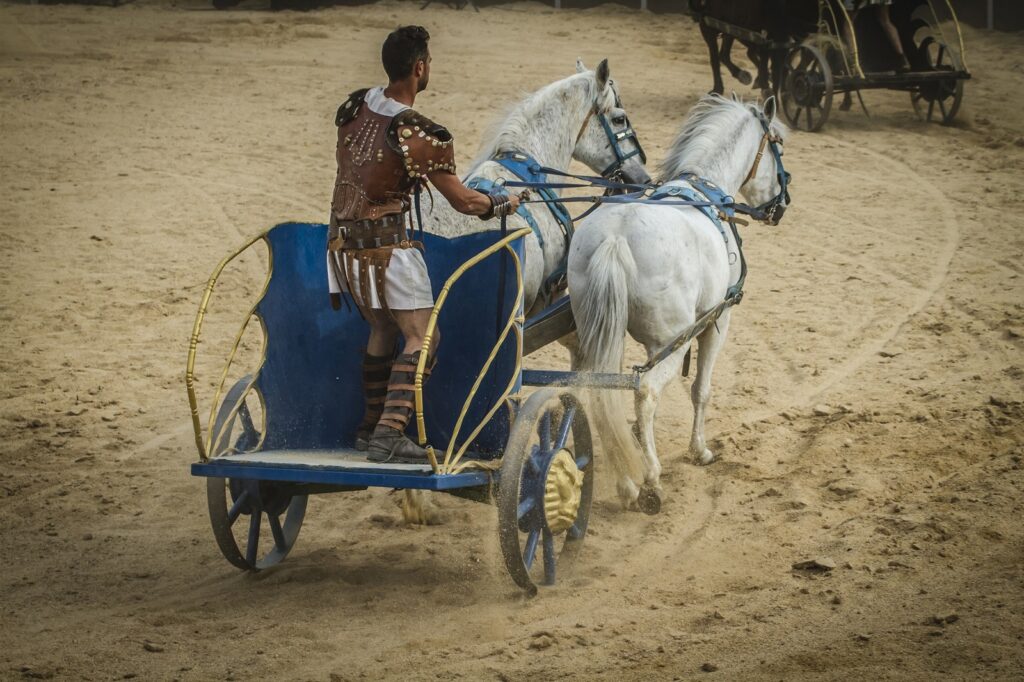
What we know as “cavalry” today was first understood and experienced in Europe by the Greeks, the Romans and the Hebrews. Alexander the Great is one of the most famous commanders in the ancient world to use horseback fighting in his campaigns of conquest against rival kingdoms. As a culture it would be both the Romans and the Greeks who would come to master this type of battle and incorporated them into their armies. Although the Romans and Greeks did not have the same riding equipment that would revolutionize the medieval ages, they still left their mark on military history, with Rome being the more ruthless of the two and who obtained the most well known achievements. Yet even with the successful usage of cavalry by the Romans to conquer most of Europe, the Middle East and North Africa there would still come to be a new and revolutionary equestrian device that would unintentionally result in the creation of a new social class system in Western Europe that would dominate it for centuries.
The invention of the stirrup changed the world.
Cavalry During the Medieval Times of Europe
The stirrup is believed to have been invented in India roughly around the first century and slowly spread across the globe over time. Although this new equipment did not significantly impact the tribes that rode horses in the East, the stirrup would revolutionize Europe. It is believed that Europeans adopted the stirrup around 800 CE. This had two of the most significant impacts on how Western history would be shaped. The first was it helped form the feudal system and kept it in place for centuries. The laws at that time stated that no one below noble birth could become a knight. These men would spend years training on how to fight with heavy armor suits that would repeal most arrows and swords, all while having to cut down the enemy and not falling off their horse. By this time in history, several centuries of dedicated animal husbandry to produce better horses resulted in the breeding of horses with longer legs and healthier backs, who could now support the weight of warriors riding upon them for prolonged periods of time and endure the rigors of large scale combat.
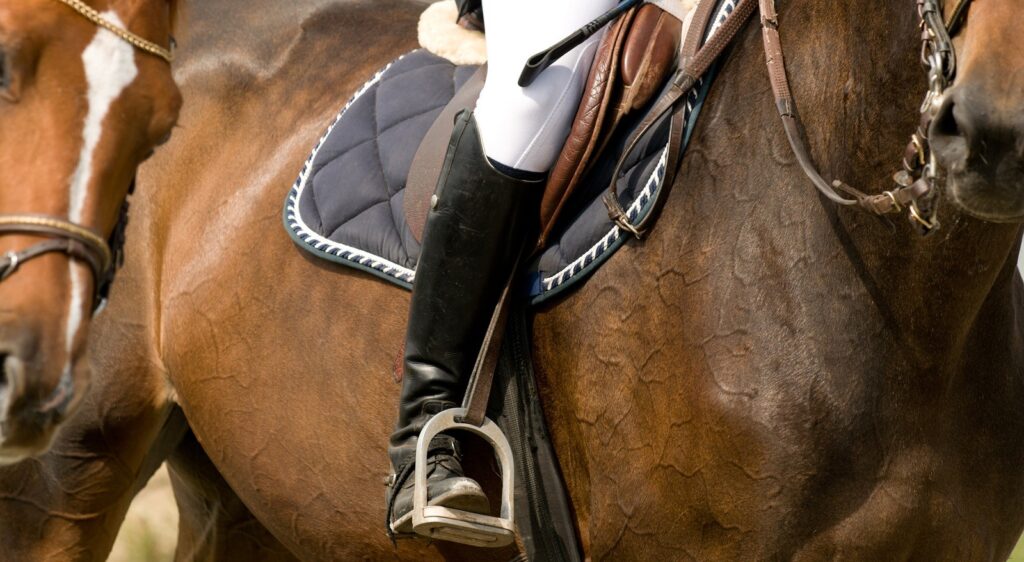
A modern style stirrup. The stirrup gave a horseback rider a platform to press their feet against, gaining greater stability that even allows for standing while riding.
The evolution of the stirrup combined with the successful breeding of stronger horses resulted in the social class of ‘knight’ to be developed.
Knights first came about in the 8th century under the Frankish leader Charles Martel, who created feudalism. From the time of the Romans the Franks had long employed elite mounted warriors, known as Comitatus. The Comitatus led a warband tied to its leader by an oath of fealty from the men within that band. The Comitatus social practices were influenced by the Roman practice of patronage (patrocinium) where a general distributed conquered lands to his officers after their retirement. This exchange would evolve among the Franks so that the leader of the band would provide land, compensation and privileges in exchange for the vassal’s pledge of military aid and protection. Many of these oaths were made not to the Frankish kings, but instead to Mayors of the Palace such as Charles Martel, who over time began to hold the true power within the Frankish tribe due to this system of vassalage.
These Frankish warriors passed their ultimate test at the Battle of Tours on October 10th 732 CE which, fought over several days, resulted in a decisive victory for the Frankish forces, who defeated the larger invading army of the Umayyad Caliphate led by Abdul Rahman Al Ghafiqi, Governor-General of al-Andalus. The Arabs had by this point in history developed cavalry due to their adoption of the stirrup, and employed these mounted warriors to invade and conquer much of the southern lands of Europe and extend even into Gaul.
The Battle of Tours is notable in that the Franks did not employ cavalry for direct combat; instead their troops used horses to quickly maneuver into positions then dismounted to use a defensive, phalanx-like formation as the Romans did, using hills and trees to break up the cavalry charges of the v forces. For seven days the two armies engaged in skirmishes with the Franks holding their ground despite being outnumbered two to one by the invading force. Furthermore this was an instance of infantry holding off and repeatedly defeating cavalry charges, much to the frustration of the Umayyad commanders.
The seasoned and battle-hardened warriors of Charles Martel were heavily armored with the latest in armor and weaponry. The Carolingian-era sword (often mistakenly referred to as a ‘Viking sword’) was an evolved form of the Roman Spatha and the predecessor of the knightly arming sword. Unlike the Spatha which was made entirely of iron, the Frankish warriors used swords constructed from thin layers of patterned steel which were overlaid onto a soft iron core, making the swords far better as the iron gave them a flexible and springy core that would take any shock from sword blows to stop the blade bending or snapping, while the steel gave the swords an exceptional edge for cutting and stabbing.
During the battle Charles Martel had scouts from his army attack the Umayyad encampment and supply train to cause chaos, which led many of the Umayyad soldiers to return to their camp and caused part of the army to make a hasty retreat. The Franks were then able to surround and defeat the portion of the Umayyad army that had remained, including their commander Abdul Rahman Al Ghafiqi. That night the survivors retreated back to Iberia leaving the Franks to victory.
The victory of this battle helped lay the foundations of the Carolingian Empire and Frankish domination of Europe for the next century. From this point forward the Frankish warriors would develop into heavy cavalrymen themselves, adopting the stirrup. Charles Martel began a policy that he would only distribute lands won in battles to vassals on condition that they fight as cavalrymen, and later his grandson Charlemagne ordered even the poorest of vassals to pool their resources to provide his army with mounted warriors. These cavalrymen made Charlemagne’s many great military achievements possible, conquering almost all of Europe before the end of his lifetime. To secure their service these cavalry men in the Carolingian army were awarded lands, called benefices, and whose revenues were expected to be used to supply the warrior with equipment and maintain his horse for use in war. This was the beginning and original purpose of fiefdom in Europe.
Over the centuries after Charlemagne’s death and the fall of the Carolingian empire, this system continued to evolve until by the 10h century knighthood was firmly established part of medieval European society and the many kingdoms that arose after the fall. This includes coming of age ceremonies such as presenting the newly recognized knight with a sword which was buckled onto him with a belt.
It is not coincidence that the universal word for mounted horseback soldiers is ‘cavalry’; it comes from the French word “cavalerie,” which means horse, and the French language itself stems from the languages of the original Frankish peoples.
By the time of the Crusades heavily armored knights would either charge at the enemy head-on during a battle or be used to group up enemy foot soldiers that became separated from the main body of their army. Foot soldiers would often be slaughtered by the mounted troops and so cavalry proved to be very effective, albeit more expensive to train and equip each unit compared to footmen. The amour plated suit of a knight was the best defense against projectile weapons such as arrows and it also protected up-close against polearms and swords, too. Being mounted on a horse in a full suit of plate armour was the best form of protection besides a shield. These suits also helped produce fear in the minds of the enemy, for when seeing a knight on horseback for not only would it take more to kill the man, but he could also run the full length of the battlefield faster than an anchor could stand on foot.
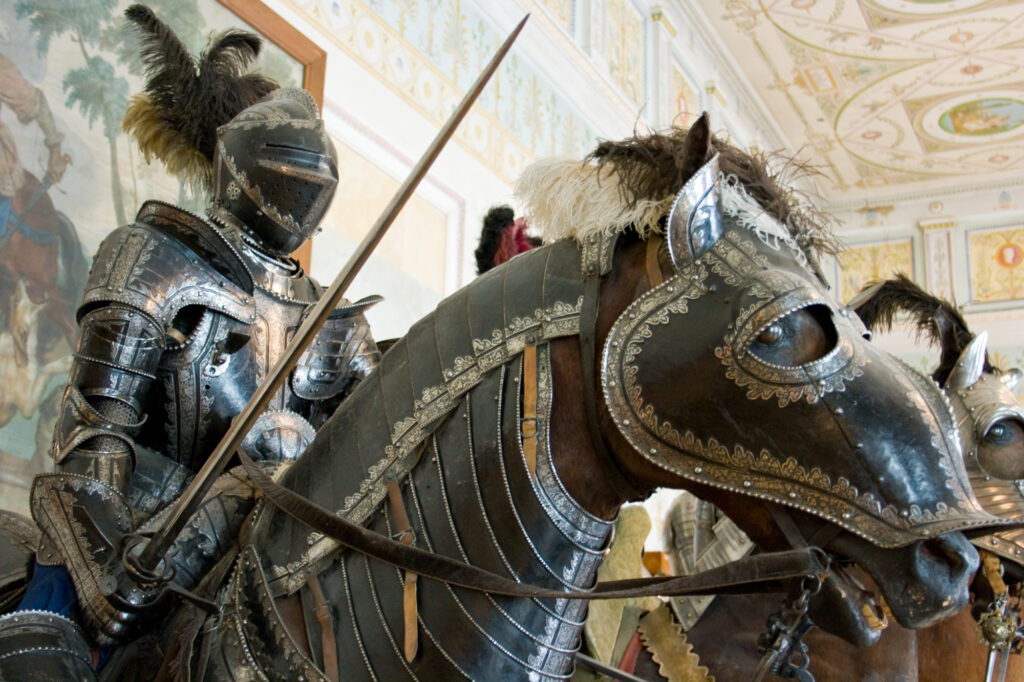
However, this period of knights in shining armor would come to an end after centuries of use when a new weapon entered the battlefield; gun powder.
Impact of Gunpower on Cavalry in Europe
The use of gunpowder on the battlefield in Europe began in the 1300s. As its popularity grew and guns like the musket come to the battlefield, the defensiveness of the full-body amour suits was proven to be defeated. It became a suicide mission to charge head-on into a volley of cannon and gun fire. The nature of warfare then changed again in response to these new weapons and tactics.
Over the centuries horseback soldiers would develop the sword further and further until finally in the 18th century a new blade form was devised, centered on characteristics that benefited their style of fighting the most. It would be the sabre. This sword has a long and sometimes curved blade with a curved guard to protect the knuckles. It was inspired by the same kinds of swords used by Hungarian mounted warriors. The reason why the blade is curved is that it allows for a better slicing motion through the opponent as the rider drives through large groups of enemy soldiers. This sword can also be used to perform stabbing thrust while horseback, too. The flexibility of this weapon allows for a quick and decisive movement no matter which hand the rider is dominant.
The Final Years of the Relevance of Cavalry in Major Wars and Conflicts
After the American Civil War in the 19th century, the use of equestrian troops in direct battlefield conflict had already begun to fall out of favor in the United States. While they were still used in some battles by officers, horses were more useful as letter carriers between post commands, or to do quick raids on enemy encampments. If used in open battlefields to conduct charges against troop defensive lines they fell quickly to soldiers armed with repeating rifles. This was the situation Theodore Roosevelt and his famous Rough Riders faced while fighting in the Spanish-American War. However, in European wars the cavalry still continued to be used.
The use of fighting on horseback was still a popular form of military strategy for many rulers of Europe. From Louis XIV of France and Frederick the Great of Prussia to the French Revolution and the Napoleonic wars, the use of mounted troops was still considered an elite force to have. By this time, the Napoleonic Wars had changed the rule of who could or could not become an equestrian. One’s birth no longer limited it, rather it was one’s ability, agility, and dedication that decided who could join or not. A soldier was still expected to be able to fight with both sword and gun interchangeably, however, and had to undergo specialized training.
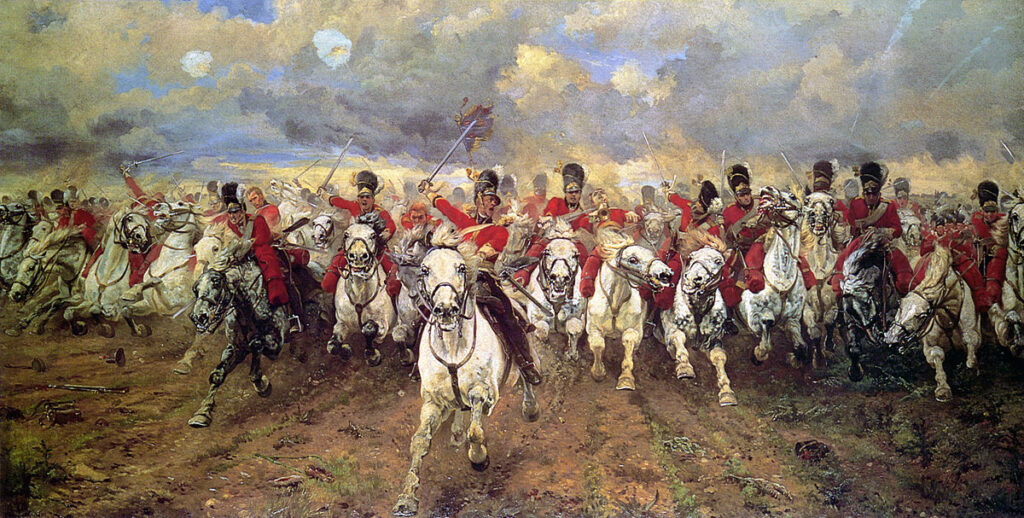
Napoleon loved his mounted troops. So much so that he required 1/6th of his army to be made up of equestrian fighters. Waterloo would be one of the significant battles that Napoleon would fight with a high number of these men; sixteen thousand five hundred it is said. These numbers were a mixture of heavy and light horseback fighters in the wars leading up to Waterloo. The heavy equestrian fighters wore heavier breast plated amour and had more weapons, so they required healthier horses. While these horses were more robust than the horses used by the lightly mounted troops, they were slower and extremely vulnerable when formations broke.
The benefits of being part of the heavy mounted troops they were intimidating, as they were heavily armed. When they did charge the enemy, they stayed tight information, which allowed them to bulldoze over anyone in their way. The drawbacks would be if the formation were broken, the horses could not turn to face nor runway fast enough, which left the rider in a life or death situation. In comparison the benefits of being part of the more lighter mounted troops were that soldiers could get in and out of a position quicker, for the horse was able to maneuver better and use less stamina. The drawbacks were that lighter cavalry were not viewed as dangerous. For a commander, it was up to him to decide if brute force or intimidation and harassment would be better to win a battle with although Napoleon preferred to use both types of units in his campaigns as the situation called for it.
When World War I started, there was still an expectation that all of Europe would be using mounted troops has it had been done in previous wars earlier. This idea did not last long. There was a new way of fighting with better weapons and different tactics. With the use of machine guns and trenches, and the introduction of tanks and long range artillery mid-war, it was considered suicidal to send men on horseback out into the open of ‘no man’s land’ where nothing existed to provide any shelter. While there was still hope that this old, familiar way of fighting could be used again, it has proven to be wishful thinking. Horse mounted cavalry was abandoned for military warfare and the men were sent out on foot to fight instead.
The last European country to cling to keeping mounted troops was Russia. During the Bolshevik Revolution and the war with Poland from 1919-1920, Russia still used mounted troops to fight in their battles. During World War II Russia had 20 divisions of equestrian riders and World War II would be the last war that Russia would use them. On top of the machine guns and trenches from World War I, there was even increased usage of metal tanks and armored fighting vehicles on the ground and the aircraft fighters in the air to contend with.
When one stops to think about the length of time in human history that equestrian fighting has been used as part of the primary source of warfare, it is staggering! There have been horse using warriors in almost every army in every continent throughout history. It can be considered mind-blowing how a straightforward tool such as the stirrup for riding horses would forever change the world, evolved how wars would be fought and shape a whole economic and political system that ruled Europe for centuries. Many of the great military leaders that we remember still to this day used horses in their military quest for glory. Alexander the Great, Charles Martel, Charlemagne and Napoleon Bonaparte are just some of the most famous European military leaders of their time and helped shape the world as we know it. They all sought the same idea of world dominance, and used many of same military tactics.
It has not even been a full century since European countries have stopped using horses on the battlefield. While we do not think of equestrian based combat as essential or as a common form of fighting in our world today, it has been for well over three thousand years. So while we rely heavily on missiles, military aircraft, and bombs, we can still learn many things from one of the oldest forms of military fighting; cavalry. And this is why many people within the HEMA community are reviving Historical equestrian martial arts as a sport today.
****
If you’d like to learn more information about historical fencing practices please check out our Learn HEMA page for a guide to learning about the historical weapon that interests you. You can also find more guides we’ve written about other topics at our Helpful Guides page. Feel free to share your thoughts on this article by commenting. You can also join the conversation at our forums or our Facebook Group community.

